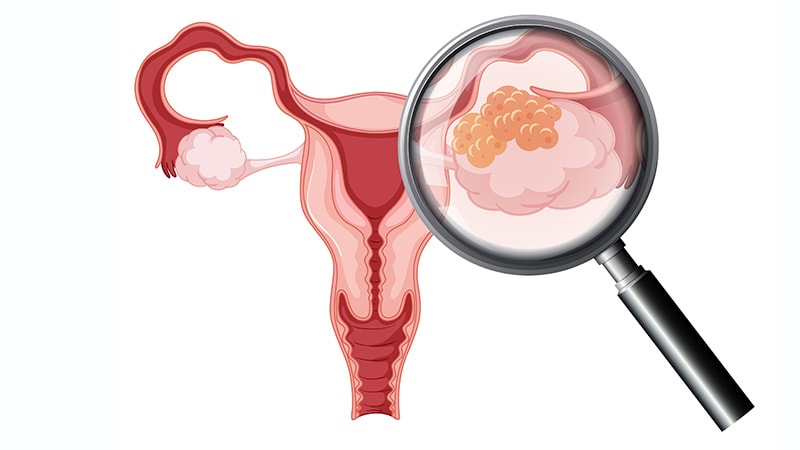Ovarian cancer is often called the “silent killer” because its symptoms are subtle and easily mistaken for common, non-cancerous conditions. Many women are diagnosed at an advanced stage, leading to lower survival rates. In this post, we will explore:
- The most common and uncommon symptoms of ovarian cancer
- Why these symptoms are often overlooked
- When to seek medical attention
- Effective screening tools and preventive measures
By understanding the warning signs, you can take proactive steps to protect yourself and your loved ones.
What Is Ovarian Cancer?

Ovarian cancer begins in the ovaries—two small, almond-shaped organs located on each side of the uterus. It is the fifth leading cause of cancer-related deaths among women and is most commonly diagnosed in women aged 65 and older. However, younger women in their 20s, 30s, and 40s are also at risk.
The American Cancer Society estimates that over 22,000 women in the U.S. will receive an ovarian cancer diagnosis this year. Unfortunately, about 14,000 women will die from the disease, primarily due to late-stage detection (American Cancer Society).
Why Ovarian Cancer Is Called the Silent Killer
Ovarian cancer is known as the silent killer because its symptoms are often vague and easily confused with less serious conditions. Many women attribute the symptoms to aging, weight gain, or digestive issues. As a result, ovarian cancer is frequently diagnosed at an advanced stage, when it has already spread to other parts of the body.
Common and Uncommon Symptoms of Ovarian Cancer
Ovarian cancer symptoms can vary, and they often mimic those of other non-cancerous conditions. Here are 13 key symptoms to watch for:
1. Abdominal Bloating
- Description: Persistent swelling, fullness, or discomfort in the abdomen. The area may feel hard to the touch rather than squishy, which is typical of digestive bloating.
- Why It Happens: Tumors or fluid buildup (ascites) can cause abdominal swelling.
2. Urinary Issues
- Description: Increased frequency or urgency to urinate, difficulty emptying the bladder, or pain during urination.
- Why It Happens: The growing tumor can press against the bladder, affecting its function.
3. Indigestion and GERD (Gastroesophageal Reflux Disease)
- Description: Persistent heartburn, upper GI pain, or nausea that doesn’t respond to medication.
- Why It Happens: Ovarian tumors can push against the stomach and intestines, disrupting digestion.
4. Lower Back Pain
- Description: Unexplained chronic pain from the hips to the lower back, often mistaken for muscle strain.
- Why It Happens: Tumors can irritate nerves in the pelvic region, causing referred pain.
5. Pain During Intercourse
- Description: Discomfort or pain during sexual intercourse, which is often attributed to menopause or hormonal changes.
- Why It Happens: Tumors may press on the reproductive organs, leading to pain.
6. Menstrual Changes
- Description: Irregular periods, heavier or lighter bleeding, or postmenopausal bleeding.
- Why It Happens: Hormonal imbalances caused by ovarian tumors can disrupt menstrual cycles.
7. Persistent Nausea and Vomiting
- Description: Frequent nausea or vomiting unrelated to food intake or other known causes.
- Why It Happens: Tumors pressing against the stomach can cause digestive disruptions.
8. Leg Pain or Swelling
- Description: Pain or swelling in one leg, often mistaken for sciatica. This may be accompanied by numbness or a burning sensation.
- Why It Happens: Tumors can obstruct lymphatic drainage, leading to swelling and pain.
9. Bowel Changes
- Description: Chronic constipation, diarrhea, or alternating between the two. These symptoms are often confused with irritable bowel syndrome (IBS).
- Why It Happens: Tumors pressing on the intestines can alter bowel movements.
10. Pelvic or Lower Abdominal Pain
- Description: Persistent pain in the lower abdomen or pelvic area, often felt on one side.
- Why It Happens: Tumors in the ovaries or surrounding tissues cause discomfort and pressure.
11. Unexplained Fatigue
- Description: Extreme tiredness not relieved by rest, affecting daily activities.
- Why It Happens: Cancer cells consume energy and disrupt normal body functions, leading to fatigue.
12. Loss of Appetite
- Description: Reduced desire to eat or feeling full quickly after eating small amounts.
- Why It Happens: Tumors pressing on the stomach limit its capacity to hold food.
When to See a Doctor
If you experience more than seven of these symptoms consistently for two weeks or longer, it’s essential to consult your healthcare provider.
Request the following screenings:
- Pelvic Ultrasound – To detect any abnormalities in the ovaries or surrounding tissues.
- CA-125 Blood Test – To measure a protein often elevated in ovarian cancer patients.
Early Detection and Screening Tools
1. Pelvic Exam
Although not always effective in detecting early ovarian cancer, a pelvic exam can identify abnormalities.
2. Transvaginal Ultrasound (TVUS)
This imaging test helps detect ovarian tumors or masses.
3. CA-125 Blood Test
Elevated levels can indicate ovarian cancer, but this test is not definitive since other conditions can also raise CA-125 levels.
Risk Factors and Prevention
| Risk Factor | Description |
|---|---|
| Age | Most common in women over 65 |
| Family History | Higher risk if close relatives had ovarian cancer |
| Genetic Mutations (BRCA1/BRCA2) | Inherited gene mutations significantly increase risk |
| Endometriosis | Linked to a higher likelihood of ovarian cancer |
| Hormone Replacement Therapy | Long-term use may elevate risk |
Preventive Measures:
- Genetic testing if you have a family history of ovarian or breast cancer.
- Discussing preventive surgery options if you carry the BRCA mutation.
- Regular pelvic exams and screenings for early detection.
Frequently Asked Questions
1. Can ovarian cancer be detected early?
Yes, but early detection is challenging due to vague symptoms. Routine pelvic exams and awareness of risk factors improve the chances of early diagnosis.
2. Is there a reliable screening test for ovarian cancer?
No single test is reliable. A combination of pelvic exams, transvaginal ultrasounds, and CA-125 blood tests is often used.
3. Can young women get ovarian cancer?
Yes, ovarian cancer can occur at any age, although it is more common in women over 65.
Take Action: Be Proactive About Your Health
- Listen to your body and don’t ignore persistent symptoms.
- Educate yourself and others about ovarian cancer.
- Advocate for your health by asking for comprehensive screenings.
- Seek a second opinion if your concerns are not taken seriously.
By staying informed and vigilant, you can increase your chances of early detection and improve your overall health outcomes.
Final Thoughts
Ovarian cancer is a silent killer, but it doesn’t have to be. Recognizing the warning signs and advocating for early screening can save lives. Share this information with loved ones and encourage them to seek medical advice if they notice persistent symptoms.
For more detailed information, visit the Ovarian Cancer Research Alliance or the National Ovarian Cancer Coalition.






